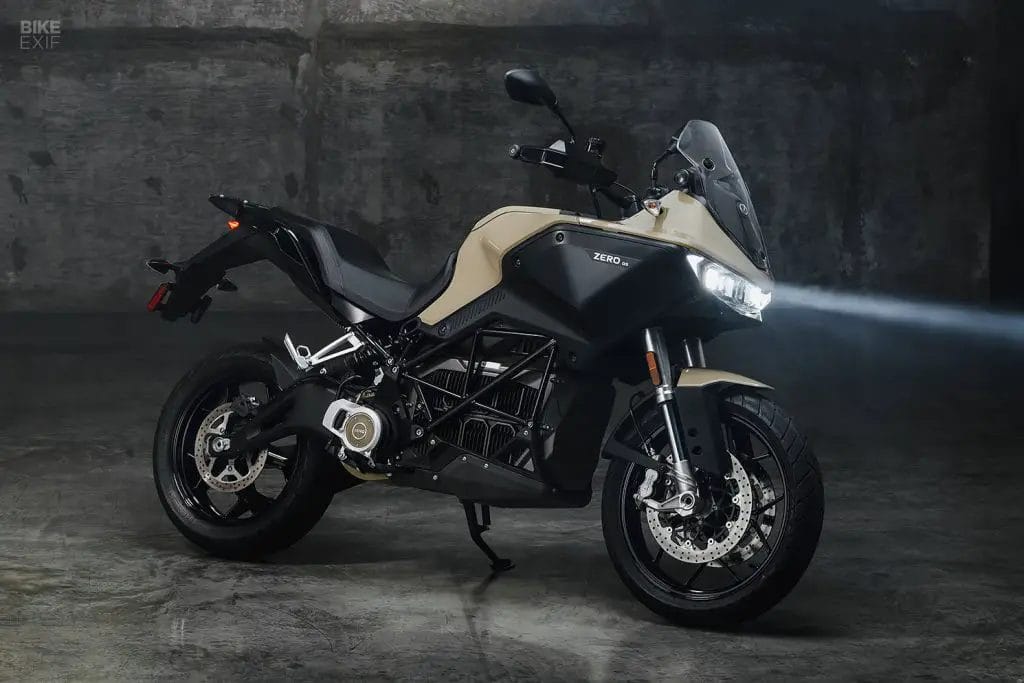Battery-powered motorcycles have been touted as the next big thing in mainstream motorcycling forever, and we’ve seen many promising attempts fall apart over the years. But long-time players like Zero and now LiveWire (formerly a model within Harley-Davidson’s range) have shown that the market has room to maneuver, and so the realistic options for motorcyclists who want a battery-powered bike are only increasing.
This year’s EICMA trade fair in Milan reinforced this idea, and here are the five standout electric machines that caught our eye
2024 Velocifero Race-X

The world premiere at this year’s EICMA was Velocifero’s Race-X, a scrambler-style model that looks set to elevate the young Italian brand to a bigger stage. The company already produces several smaller models, all electric, but the Race-X is the most powerful yet, with a 7000 watt motor coupled to a 6.48 kWh lithium battery, with a charging time of 2.5 hours, using a 110 or 240 volt socket or public AC charging stations. Even so, the top speed is only 120.7 km/h, although the company also claims that the maximum torque is 219.6 Nm and that the range is more than 160 kilometers on a single charge. Riders can use four driving modes: P, Eco, Sport and Sport+, and the chassis includes an inverted fork at the front with a single shock absorber working on an aluminum swingarm. The Race-X is scheduled to go into production in May 2024, with the bikes being built in China.
Royal Enfield Electric Himalayan

A new liquid-cooled engine and a battery-powered prototype, all in the space of a few months? Say what you like about Royal Enfield’s seemingly retro product line, but these two latest moves by the brand show a clear desire to break out of the retro box it has long occupied. The Himalayan Electric prototype unveiled at EICMA is being billed as a “test bed” to explore the possible future of battery-powered RE, but the fact that it’s a motorcycle for racing is impressive enough, considering the kind of demanding environments the base model was designed for. We know that on the Him-E, Enfield has used ideas such as a structural box for the battery that also serves as a frame and organic fiber for the fairing, but details such as performance, battery capacity and range remain hidden. Still, we’re impressed that Enfield’s first electric vehicle is so far advanced in the development phase, which demonstrates a strong commitment to the electric vehicle segment.
Verge TS 2024

From the crazy axleless rear-wheel drive system to the solid locked engine compartment and plethora of plastic, there’s nothing remotely familiar about the prototype-looking Verge TS, unveiled at EICMA (again) this year. The specifications include a 107 hp engine – fitted to the rear wheel – which also boasts a staggering 999.2 Nm of torque. The range isn’t bad either, with Verge claiming that the standard TS has a range of 249.4 km in mixed use. Verge is already accepting pre-orders for North American buyers and the bikes are expected to ship in the middle of next year.
Ultraviolette F99 2025

The brand has unveiled its new F99 electric superbike. Currently, the Indian brand only has one other model, the F77, but it is trying to attract attention with this “factory racing concept” which is due to be launched globally in 2025. For a so-called superbike, the F99’s specifications are somewhat average, with the machine producing a claimed 120 hp, a top speed of 265.5 km/h and a 0-100 time of three seconds with the liquid-cooled electric motor. Energica’s Ego+ model, for example, beats all these figures, but we’ll give Ultraviolette credit for the F99’s impressive design, which includes active aerodynamics with winglets, a hybrid steel frame with an aluminum swingarm and an all-carbon fiber body. Although it was presented at EICMA as a circuit-only project, Ultraviolette claims that when the F99 is launched, it will be the fastest two-wheeler to come out of India.
Zero DSR 2024

Zero joined the party to unveil new bikes at EICMA with a revamped DSR model that it calls new, rather than updated. This is a good thing, as it moves a long way away from the simpler vibe of the previous bike and the attractive new fairing adds weight to the “new model” designation. The new styling is the clear difference on the DSR 2024, with the large new upper fairing with high windshield closely following the design language of the DSR/X. Not only is it better looking, but the DSR 2024 also has a more robust and reinforced frame, an improved Gates carbon belt drive and a larger capacity battery. The new 15.6 kWh unit has a range of 249.4 km in the city and 160 km city/highway; the top speed is 167.3 km/h with the new Z-Force 75-10 motor, which delivers 80 hp and 195.2 Nm. of torque.







